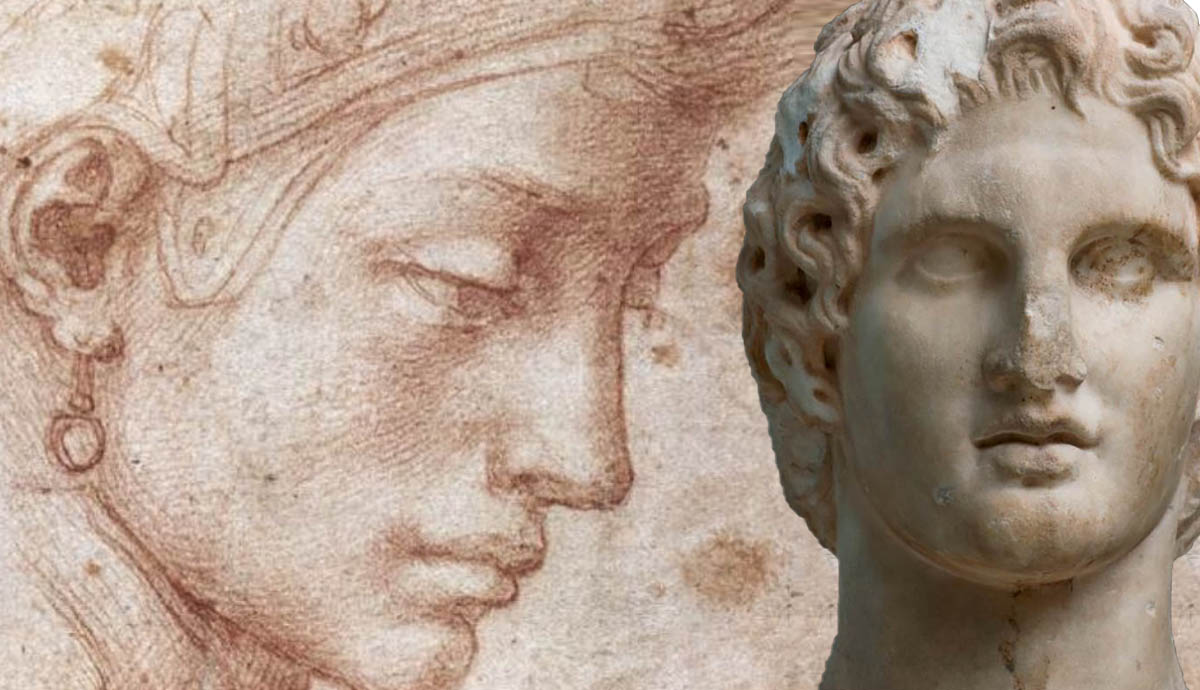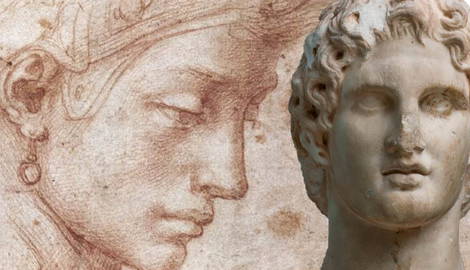
Bagoas the Younger was a lover of Alexander’s mid to late life, given to Alexander the Great from King Darius III’s court post-conquest. He is mentioned three times in the surviving ancient sources, and this scarcity of material has led a select few scholars to go so far as to question his existence. However, many rebuttals to those theories have been written and his existence is now generally accepted.
Alexander The Great’s Boy: A Persian Courtesan

Bagoas was a Persian eunuch, originally a lover of the Great King Darius III. He is distinguished from another courtier in the court of Darius III, also called Bagoas, who was shamed for his attempt to assassinate the Great King he originally installed on the throne—this is Bagoas the Elder. Bagoas the Younger lived through the betrayal of King Darius III and the conquest of Alexander the Great and was the lover of these two great kings.
Not much is known about the life of Bagoas the Younger prior to his arrival at the court of Darius III, though some theorize that he may have been of higher class due to his eventual position as a eunuch of the king. What is known is that he was brought to the court as a young boy and like most—if not all—eunuchs, he had already had the castrating procedure. Once at court, he was a favorite of Darius III. He was also known as an exceptional dancer and ancient sources claim that he participated in dancing festivals when he traveled with Alexander, notably winning the famous festival in Carmania after the march through the Gedrosian desert.
Eunuchs In Ancient Greece

Eunuchs were not a feature of the Macedonian court, and so it speaks to Alexander’s interest as well as his political discretion that he accepted the gift of the young eunuch. Though figures such as Xenophon had praised eunuchs’ uses as servants, Macedonians still viewed eunuchs with much distaste and hostility. In most of ancient Greece, many negative stereotypes prevailed about eunuchs: that they were overly lusty, cowardly, and gluttonous. This attitude did not persist forever; in fact, after the death of Alexander, under one of his successors—Ptolemy I, his half-brother—eunuchs became an accepted part of court society and held important positions in Hellenized Egypt.
Many argue that Alexander’s embracing of Bagoas is due at least in part to his persophilia. Alexander the Great admired the Persian ways and adopted many of them himself, as well as studying Xenophon’s Cyropaedia to the point of idolization. These factors would have likely predisposed him to be more accepting of eunuchs than the average ancient Greek or Macedonian.
Bagoas As The Eromenos

Nabarzanes was the trusted commander of Darius III’s royal cavalry but at the suggestion of an allied satrap named Bessus, betrayed the king and ultimately participated in his assassination as Alexander advanced. It is said that they struck the Great King with javelins and he died of his wounds. However, the soon-to-be Great King notoriously punished traitors, and so hoping to garner favor and mercy with the new conqueror, Nabarzanes presented Bagoas to Alexander the Great and pleaded his case for clemency. Sources agree that Alexander granted these pleas.
Curtius recounts his presentation to Alexander, referring to Bagoas as “…a eunuch of exceptional appearance and in the very flower of boyhood, with whom Darius had had a relationship, and with whom Alexander soon had one…”
“The flower of boyhood” indicates that Bagoas was likely in his mid-teenage years when he met Alexander, possibly fourteen or fifteen. This means that he would have aged into his mid-twenties by the time of Alexander the Great’s death, after which he disappears from sources.

According to Curtius, Alexander spared the life of Nabarzanes at Bagoas’s request and then took the eunuch into his court. Scholars doubt the validity of the claim that Alexander pardoned Nabarzenes as some sort of favor to him. This is because there is little reason for him to do so when it is likely that he hoped to make an example of Nabarzenes in the first place to encourage further submission to his reign.
However, Alexander the Great and Bagoas certainly shared a significant relationship. There is plausible speculation that Alexander took other male lovers such as his companion, Hephaistion, but Bagoas is the only male in Alexander’s circle to be referred to as his eromenos. The term eromenos describes a specific relationship in ancient Greece: pederasty. The eromenos was the younger, submissive male in the pederastic dynamic. Curtius seems to interpret this connection between the two men in part because of the story of the dancing festival in Carmania.
The Carmanian Dancing Festival And What The Sources Say

Dance was central to ancient Greek culture. It was characteristic of every social or celebratory occasion. Alexander the Great knew the power of dance and of festivities, and so threw festivals often to raise the spirits of his men when on campaign. This round of games—which included sporting events, singing, and dancing festivals—Alexander hosted to celebrate the completion of the army’s lethal trek through the Gedrosian desert. During this march, he lost at least 12,000 of his soldiers, or just under half of the army, as well as almost all livestock.
It is not known what dance Bagoas danced for the festival, whether it was Persian or Greek, or how many other contestants he competed against. What is known is that upon announcing his victory, Alexander stepped down and kissed the eunuch at the insistence of his men. The prompting of his men shows something quite unique; an apparent acceptance of and delight in Bagoas, even in his intimate relationship with their king.

Two sources survive that Curtius would have pulled information from Athenaeus and Plutarch. Plutarch predates Athenaeus by approximately one hundred and thirty years. These writings would have in turn pulled from other sources closer to Alexander’s time, but unfortunately, none of those primary sources have survived.
In his passage regarding the festival, Plutarch describes similar circumstances, and notably refers to Bagoas as Alexander’s favorite. “He was once viewing some contests in singing and dancing, being well heated with wine, and his favorite, Bagoas, won the prize for song and dance, and then, all in his festal array, passed through the theatre and took his seat by Alexander’s side; at sight of which the Macedonians clapped their hands and loudly bade the king kiss the victor until at last he threw his arms about him and kissed him tenderly.”
Athenaeus describes the Carmanian festival as such, citing the work of Dichaearchus, one of the earlier sources which has not survived. He writes that “[Alexander] was so much under the influence of Bagoas the eunuch, that he embraced him in the sight of the whole theatre; and that when the whole theatre shouted in approval of the action, he repeated it.”
Bagoas: Eunuch, Friend, Lover Of Kings

Four sources within living memory of Alexander the Great refer to Bagoas, both to his existence and his relationship with Alexander. Though eunuchs were not common in Macedonian culture, it is unsurprising that Alexander found value in such a person as Bagoas.
Eunuchs traditionally occupy cultural middlegrounds and Alexander himself was a man of middle ground—between Persian and Greek, king and soldier, man and god. From the surviving sources, it is known that Alexander counted Bagoas among his inner circle. This group was called The Friends of the King, or as Alexander’s Companions. From these same sources, scholars know that Bagoas was Alexander’s lover as well; in fact, this is likely why he was associated with the Companions.
Yet as later sources disparaged the relationship, so do modern writings. With the king himself already a man predisposed to individuality, it seems clear that attempts to erase Bagoas come from ancient and modern intolerance of both the king himself and the nature of the relationship, not indeed from a lack of evidence nor plausibility.










